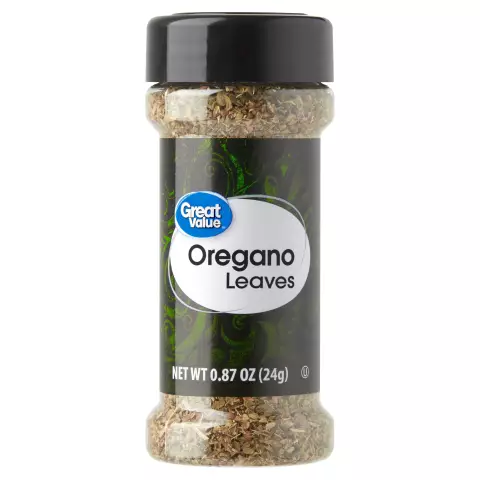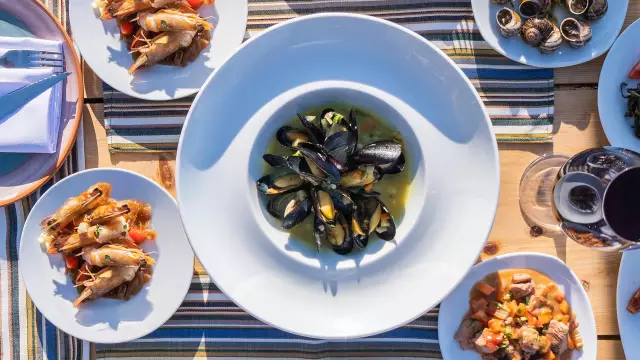- Author Rachel Wainwright [email protected].
- Public 2023-12-15 07:39.
- Last modified 2025-11-02 20:14.
Langoustine
This representative of crustaceans, the closest relative of the lobster, although it looks more like a lobster, is rightfully considered one of the most delicious seafood delicacies. Langoustine has many names: in the British Isles it is called Dublin shrimp, in Italy it is called scampi. Traditional habitats are the northeastern waters of the Atlantic, from Iceland and Norway to Morocco. Also, widespread fishing is carried out in the North and Adriatic Seas.
The ratio of BJU in the product

Source: depositphotos.com How to burn 112 kcal?
| Walking | 28 minutes |
| Jogging | 12 minutes |
| Swimming | 9 minutes |
| A bike | 16 minutes |
| Aerobics | 22 minutes |
| Household chores | 37 minutes |
Useful properties of langoustines
Scampi have ten legs, a strong, pointed orange or hot pink carapace, and long, ring-shaped pincers. The size of this marine inhabitant is from 12 to 25 cm. Langoustines live at a depth of 45-250 m in caves, which they themselves dig in soft soil. During the day they sit in their homes, and at night they go hunting.
Langoustines are valued for tender, juicy meat with a delicate and refined taste, which is located in the tail and is considered dietary. But in the claws of the Dublin shrimp it is not at all. These crustaceans caught just before cooking are especially tasty.
Since langoustines practically cannot exist without water, they are first boiled before transportation, and then frozen, which is not the best reflected in their taste. Therefore, in places of fishing, they usually sell live lobsters, previously placed in a special tube. This helps protect against clinging claws and is an indicator of the high quality of the langoustine.
The freshness of a given seafood upon purchase can be determined by its smell. The absence of a characteristic fishy odor in the fold between the tail and the shell indicates the freshness of the scampi. Langoustines meat is a source of easily digestible proteins, fatty acids, as well as a whole list of useful microelements - zinc, phosphorus, copper and selenium. Only 100 g of the product contains 33% of the daily value of copper and iodine, 20% magnesium, 10% calcium.
By including some langoustine dishes in your diet, the recipes for which are not difficult, you can significantly increase immunity. Eating the meat of this representative of crustaceans:
- Strengthens bones;
- Improves vision;
- Normalizes metabolism;
- Keeps hair and skin healthy;
- Promotes efficient brain function;
- Has a beneficial effect on the circulatory system;
- Prevents premature aging;
- It is an excellent antidepressant.
Scientists have long found that people who eat a lot of seafood, in particular langoustines, are less likely to suffer from all kinds of diseases. The effect is achieved due to their easy digestibility and saturation of the body with minerals.
How to cook langoustines
Since the meat of this representative of crustaceans contains only 90 kcal, it is often included in various diets. Langoustine dinner will not add excess weight, but due to the large amount of protein it will energize. Since this product is considered a seafood delicacy, it is included in the dishes of many countries around the world.
In Japanese cuisine there is a dish called tempura, which is fried langoustine in batter. The French add the meat of this crustacean to their famous bouillabaisse, as well as the Orthosis soup. In Italy, scampi is one of the components of risotto, and in Spain it is often added to paella.
How to cook langoustines? The initial step in turning them into a culinary dish is boiling. To do this, lobsters in batches of ten are dipped in boiling salted water for 30 seconds. It is important not to overexpose seafood there, otherwise the meat will turn out tough.
Immediately after cooking, you need to start cleaning the langoustine: carefully separate the head from the body, break the shell with the blunt side of the knife, then the meat is easily squeezed out of the tail. The claws, head and shell can then be used to make broth or sauce, as they are very flavorful.
You can also cook grilled fried langoustines with vegetables, greased with butter with mint and basil, or simply serve them boiled whole, with lemon, lettuce and olives.

Langoustine Recipes:
- Risotto. Throw the garlic clove into a skillet with olive oil, then add the peeled scampi meat. Fry a little and pour in a glass of brandy, let it boil over high heat. Put a couple of tablespoons of tomato puree there and simmer the langoustines in it for about 10 minutes. The broth is preliminarily prepared from the head and claws of crustaceans. Next, you should fry the rice with finely chopped onions, pour everything with broth and let it evaporate a little. When the rice is almost cooked, pour over the crushed lobster cream and cream. Serve, garnish with the remaining scampi carcasses;
- Paella. Boil saffron in 500 ml of water. Cut the langoustines in half, peel the shrimp from the shell. Pour olive oil into a frying pan, add a crushed clove of garlic, lightly fry the seafood and add some saffron water. After a while, pour the remaining broth into the pan and gradually add the rice. Reduce heat and cook paella for fifteen minutes, until tender;
- Fried langoustines with parsley and garlic. Finely chop the greens and mix with vegetable oil and lemon juice, add peeled lobster and garlic to the sauce. Leave for thirty minutes to marinate the crustaceans well. Prepare a side dish for them: peel the avocado and tomatoes, chop everything into cubes, pour over with vegetable oil and lemon juice, salt and pepper. Fry the langoustines in a very preheated dry frying pan and serve with salad.
There are many langoustine recipes. Regular consumption of this seafood has a positive effect on health. They are especially useful for those who are struggling with excess weight. However, it should be borne in mind that the heads of these marine life contain a lot of cholesterol.
YouTube video related to the article:
Found a mistake in the text? Select it and press Ctrl + Enter.






